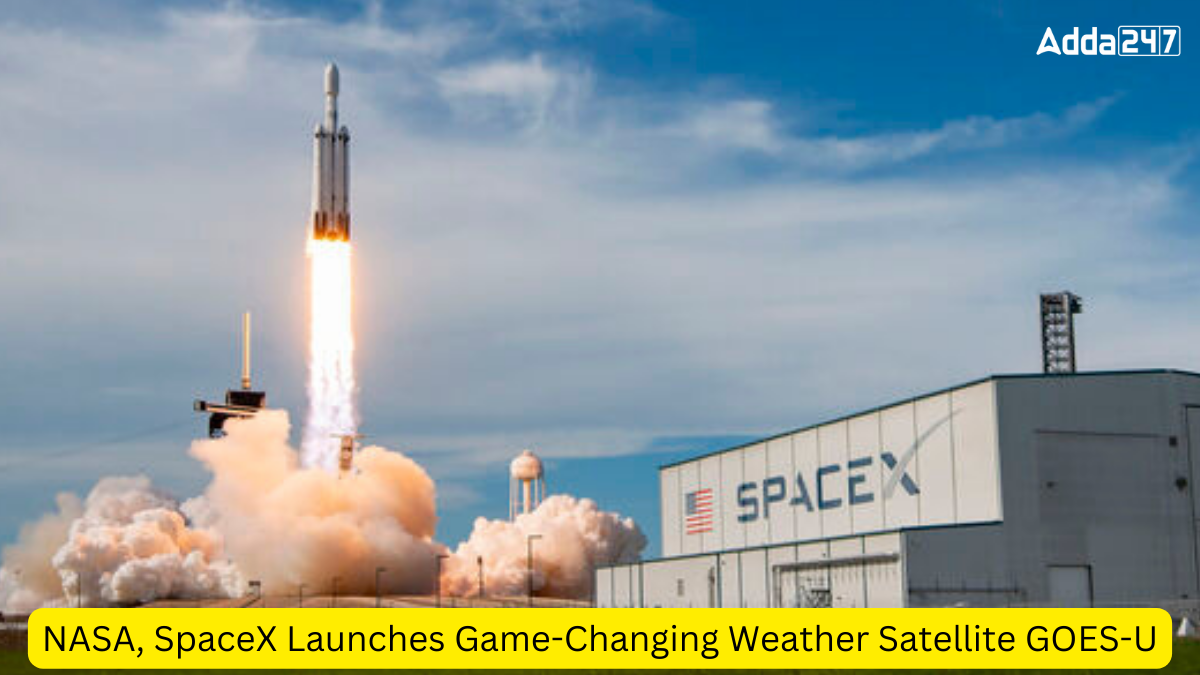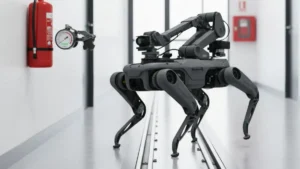SpaceX has launched NASA’s final satellite for the NOAA program, enhancing continuous weather monitoring across the Western Hemisphere. This launch improves the US ability to monitor solar flares from eight-hour intervals to every 30 minutes.
Launch and Deployment of GOES-U
GOES-U lifted off from NASA’s Kennedy Space Center in Florida aboard a SpaceX Falcon Heavy rocket at 5:26 PM. By 10:18 PM, it had deployed its solar arrays upon reaching a geostationary orbit about 22,200 miles above Earth. It will be renamed GOES-19 once settled, replacing the previous satellite, GOES-T.
How will GOES-U be helpful?
GOES-U will provide continuous monitoring of weather conditions over extensive regions including North America (contiguous United States and Mexico), Central and South America, the Caribbean, the Atlantic Ocean, and the west coast of Africa. NASA Administrator Bill Nelson highlighted the satellite’s role in real-time weather tracking, particularly in mitigating the impacts of severe weather events globally. The data collected will support preparedness efforts for storms, fire detection, and more, enhancing resilience to climate change.
What is Different with GOES-U?
GOES-U features the Compact Coronagraph-1 (CCOR-1), representing a notable technological advancement. Coronagraphs block the Sun’s disk to observe its corona, aiding in forecasting solar flares and coronal mass ejections that can disrupt Earth’s magnetic field, affecting power grids and communications. Elsayed Talaat, overseeing space weather observations at NOAA, highlighted the CCOR-1’s potential to improve solar event forecasts, enhancing early warnings for potential impacts on Earth.
What Does the Future Look Like?
Nicky Fox from NASA Headquarters emphasized the satellite’s applications in climate monitoring and disaster preparedness, noting its role in providing critical data before natural disasters and severe weather events. Talaat underscored the importance of real-time solar flare monitoring, particularly with existing systems facing delays, emphasizing the societal sensitivity to solar activity amidst modern technological reliance.
Latest Breakthrough in Space Weather Monitoring
The deployment of CCOR-1 on GOES-U signifies a leap forward in space weather observation capabilities, enabling more frequent updates compared to existing technologies. With current systems experiencing up to an eight-hour delay in solar flare data, the CCOR-1 aims to provide readings every 30 minutes, enhancing responsiveness to solar disturbances and their potential impacts on Earth’s systems.




 SCORP: India’s First Legged Mobile Manip...
SCORP: India’s First Legged Mobile Manip...
 ISRO's Successfully Lift Off Anomaly in ...
ISRO's Successfully Lift Off Anomaly in ...
 MeitY Launches PARAM SHAKTI Supercomputi...
MeitY Launches PARAM SHAKTI Supercomputi...







